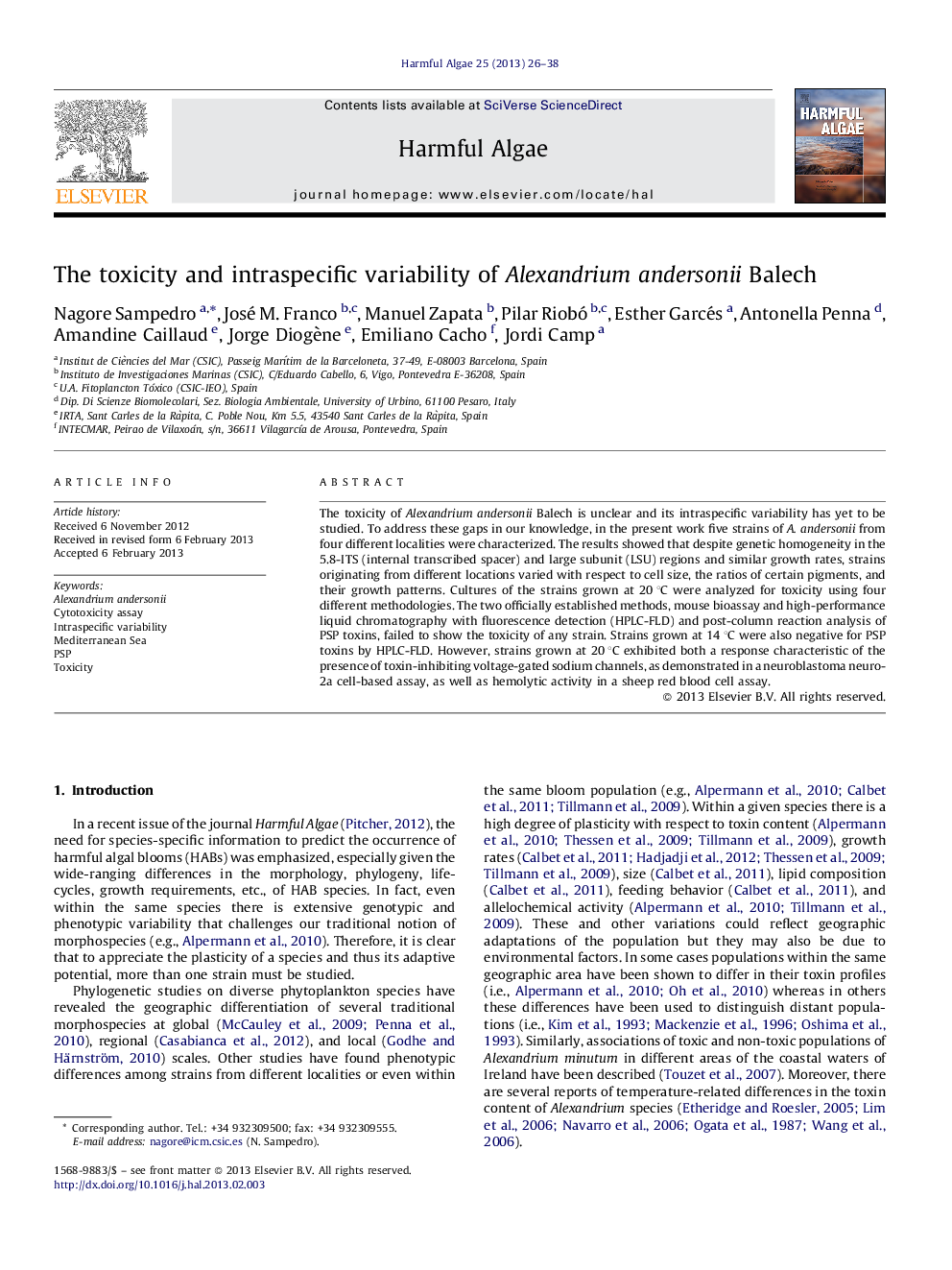| Article ID | Journal | Published Year | Pages | File Type |
|---|---|---|---|---|
| 4545479 | Harmful Algae | 2013 | 13 Pages |
The toxicity of Alexandrium andersonii Balech is unclear and its intraspecific variability has yet to be studied. To address these gaps in our knowledge, in the present work five strains of A. andersonii from four different localities were characterized. The results showed that despite genetic homogeneity in the 5.8-ITS (internal transcribed spacer) and large subunit (LSU) regions and similar growth rates, strains originating from different locations varied with respect to cell size, the ratios of certain pigments, and their growth patterns. Cultures of the strains grown at 20 °C were analyzed for toxicity using four different methodologies. The two officially established methods, mouse bioassay and high-performance liquid chromatography with fluorescence detection (HPLC-FLD) and post-column reaction analysis of PSP toxins, failed to show the toxicity of any strain. Strains grown at 14 °C were also negative for PSP toxins by HPLC-FLD. However, strains grown at 20 °C exhibited both a response characteristic of the presence of toxin-inhibiting voltage-gated sodium channels, as demonstrated in a neuroblastoma neuro-2a cell-based assay, as well as hemolytic activity in a sheep red blood cell assay.
► This article presents the first data on the intraspecific variability of Alexandrium andersonii. ► The strains differ markedly in their size, several of their pigment ratios, and their patterns of growth, despite phylogenetic homogeneity in their 5.8 ITS and LSU regions. ► None of the strains expressed PSP toxins, as determined by HPLC and in a mouse bioassay. ► Our study also shows that in some previous studies the toxicity of this species was not correctly determined.
